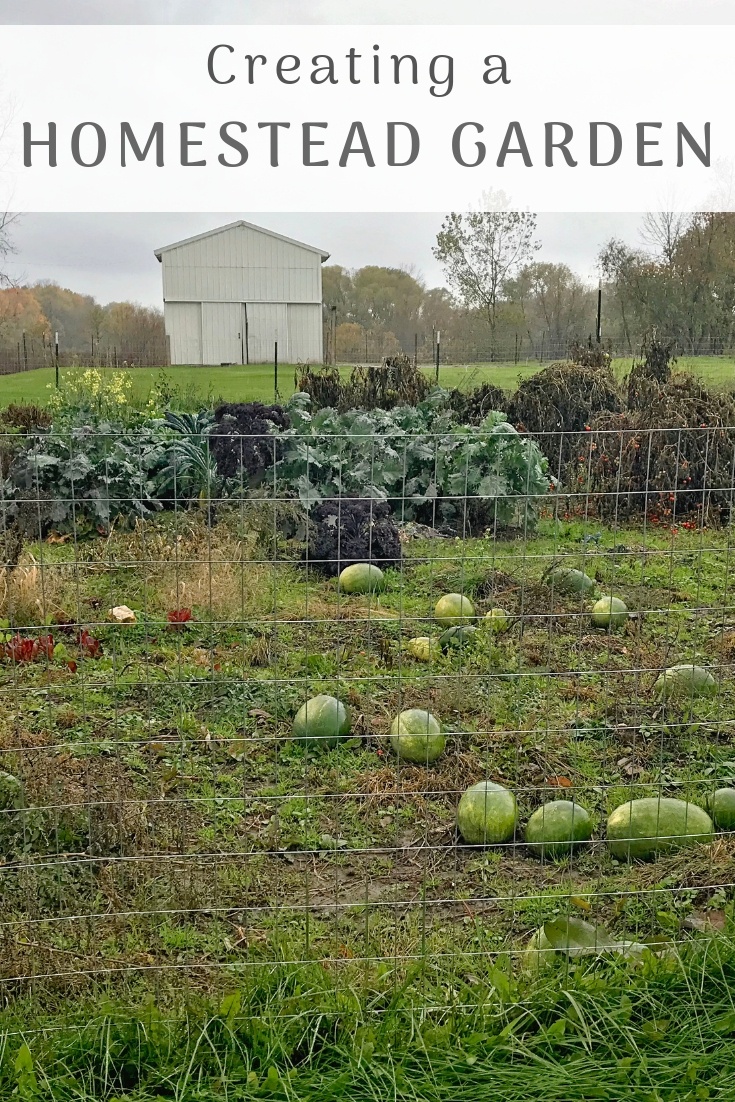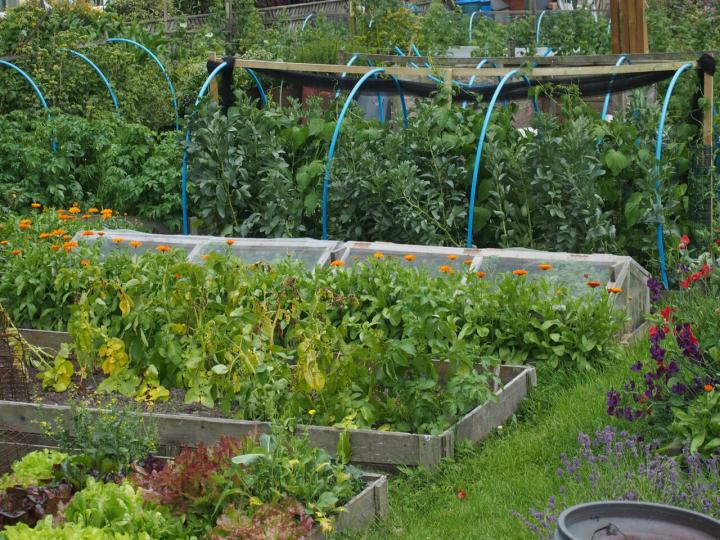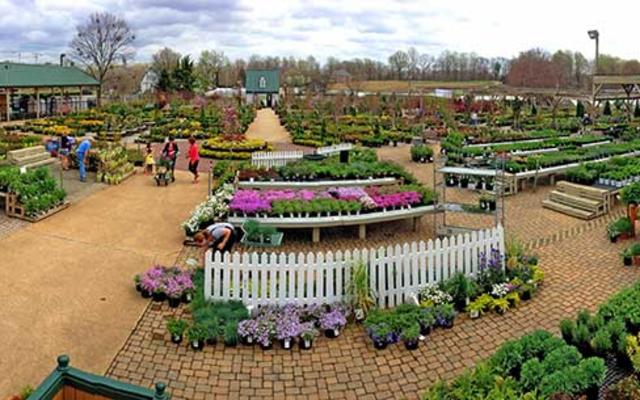Watering and Soil Management Tips for Homestead Gardening
Watering and Soil Management Tips for Homestead Gardening
Blog Article
Learn Exactly How to Cultivate a Flourishing Gardening Setting for All Skill Degrees
Producing a flourishing yard is a multifaceted endeavor that can be welcomed by people at any skill degree. By analyzing key elements such as soil health, suitable plant option, and seasonal treatment regimens, one can establish a lasting gardening technique that produces rewarding results. Recognizing exactly how to evaluate and improve your yard space lays the structure for success. Yet, the ins and outs of carrying out these concepts frequently present obstacles that can deter even the most enthusiastic newbie. What strategies can be used to get rid of these challenges and cultivate an absolutely flourishing atmosphere?
Understanding Your Yard Space
In the world of horticulture, understanding your garden room is vital to growing a thriving landscape (Homestead Gardening). The initial step in this undertaking entails evaluating the certain features of your story. Factors such as dirt make-up, sunlight exposure, and drain play critical functions in figuring out the suitability of your garden for numerous kinds of plants
Begin by carrying out a dirt test to evaluate pH degrees and vitamins and mineral material, which will inform any type of essential amendments. Furthermore, observe exactly how much sunlight your room obtains throughout the day. Different plants have varying light needs; some flourish in full sunlight, while others favor partial or complete shade.

Finally, evaluate the available space and plan accordingly. This includes taking into consideration plant elevations and spread to make sure adequate space for development without overcrowding. By acquiring a comprehensive understanding of your yard area, you set the foundation for a successful gardening experience.
Picking the Right Plant Kingdoms
Picking the right plants for your garden calls for careful consideration of various variables, including climate, soil problems, and individual preferences. Start by evaluating your regional environment, as particular plants grow in certain temperature level varieties and climate patterns. Exotic plants might not survive in colder areas, while hardy perennials can stand up to severe wintertimes.

Consider your personal preferences, including aesthetic appeal and upkeep degrees. Make a decision whether you prefer vibrant blossoms, lavish foliage, or edible crops. In addition, aspect in the moment and effort you agree to purchase plant care, as some varieties require even more interest than others.
Last but not least, assume about the garden's design and light direct exposure. Sunlight patterns throughout the day will certainly influence your options-- some plants need full sun, while others grow in color. By attentively analyzing these aspects, you can create a productive and harmonious yard tailored to your atmosphere and preferences.
Important Horticulture Devices
A well-appointed gardener can significantly improve their horticulture experience and outcomes. Vital gardening tools are basic to cultivating a successful garden, despite ability degree. A durable spade is invaluable for digging and turning soil, while a trowel allows for specific growing and transplanting of smaller plants.
Pruning shears are vital for preserving plant health by getting rid of dead or thick branches, promoting much better air circulation and development. In addition, a hand rake serves for clearing particles and aerating the soil, making certain ideal problems for plant origins.
Gardening handwear covers shield hands from thorns, sores, and chemicals, making them an important accessory. A watering can or pipe with a flexible nozzle makes certain that plants obtain sufficient dampness linked here without overwatering.
Finally, consider buying a sturdy wheelbarrow for delivering dirt, plants, and tools around the garden effectively. By constructing a high quality toolkit that consists of these important items, garden enthusiasts can tackle different jobs with self-confidence and simplicity, leading the method for a prospering gardening setting. Keep in mind, the right devices not just improve effectiveness however also enhance the total satisfaction of the gardening procedure.
Dirt Prep Work and Upkeep
Quality soil is the foundation of a successful yard, making proper preparation and maintenance essential for healthy plant growth. The primary step in dirt prep work involves evaluating its pH and nutrient levels. This can be accomplished through soil screening kits available at horticulture facilities or via professional services. Based on the examination results, modifications can be made to enhance dirt conditions for specific plant requirements.
Incorporating organic matter, such as compost or well-rotted manure, is important for enhancing soil framework and fertility. This not only enhances nutrition availability but also promotes valuable microbial task. Additionally, appropriate drain is vital; hefty clay soils might need the addition of sand or perlite to improve aeration.
Routine maintenance of dirt wellness includes mulching, which conserves wetness and reduces weeds. Revolving plants every year aids prevent nutrient depletion and minimizes insect and condition threats. It is likewise important to avoid over-tilling, which can interrupt dirt structure and harm beneficial organisms.
Eventually, a regular commitment to dirt preparation and maintenance will bring about a prospering garden, guaranteeing that plants receive the crucial nutrients they need for durable growth and performance.
Seasonal Treatment and Monitoring

In springtime, focus on growing new seeds and plants, while also carrying out dirt tests to change nutrient deficiencies. Frequently inspect for illness and pests, as these can proliferate with the warming weather. Summer demands straight from the source constant watering and mulching to keep moisture, together with pruning for better air flow.
As autumn strategies, it's time to prepare the yard for dormancy. This consists of collecting plants, tidying up particles, and using a layer of mulch to safeguard plant origins from frost. Think about growing cover crops to improve the soil throughout the wintertime months.
Finally, winter care is essential. Check frameworks like greenhouses for damage and make sure proper insulation for sensitive plants. Frequently check for pests that may look for haven indoors. By adjusting your gardening practices to the seasonal cycles, you can cultivate a growing setting that supports plant wellness year-round.
Final Thought
Finally, growing a successful yard requires a comprehensive understanding of necessary concepts such as dirt structure, sunshine direct exposure, and suitable plant choice. Carrying out reliable dirt preparation and upkeep methods, along with making use of the right devices, fosters an ideal growing environment. Normal seasonal care and management techniques even more boost plant wellness and efficiency. By sticking to these fundamental standards, people whatsoever skill degrees can achieve a growing yard that adds to both aesthetic satisfaction and environmental sustainability.
Selecting the right plants for your yard needs mindful factor to consider of various aspects, including climate, dirt conditions, and personal choices. Conduct a dirt test to determine pH degrees and nutrition web content, which will assist you in picking plants that will flourish in your yard.Lastly, take into consideration spending in a durable wheelbarrow for carrying dirt, plants, and devices around the garden effectively.Quality dirt is the foundation of an effective garden, making proper prep work and maintenance essential for healthy plant growth. Homestead Gardening.In conclusion, growing a successful yard calls for a detailed understanding of vital principles such as dirt structure, sunlight direct exposure, and Extra resources proper plant option
Report this page